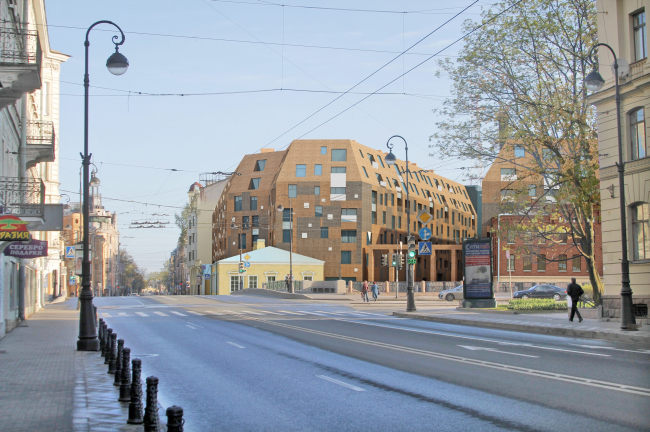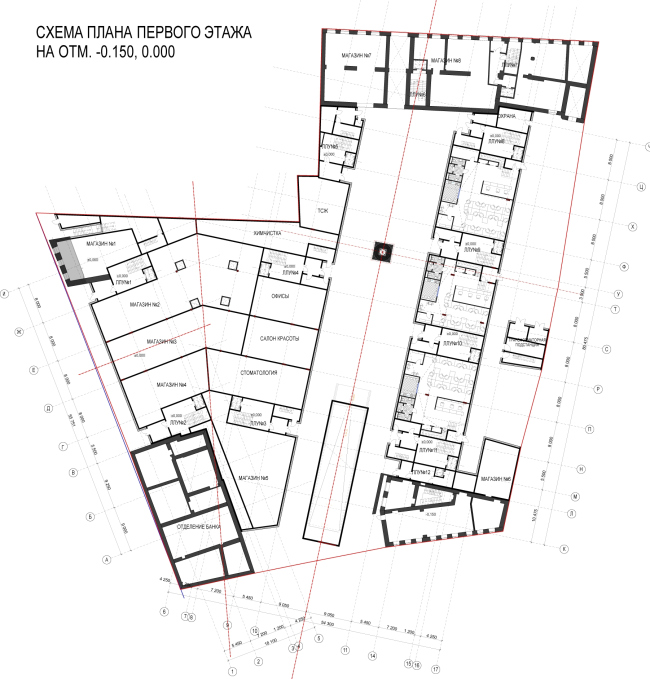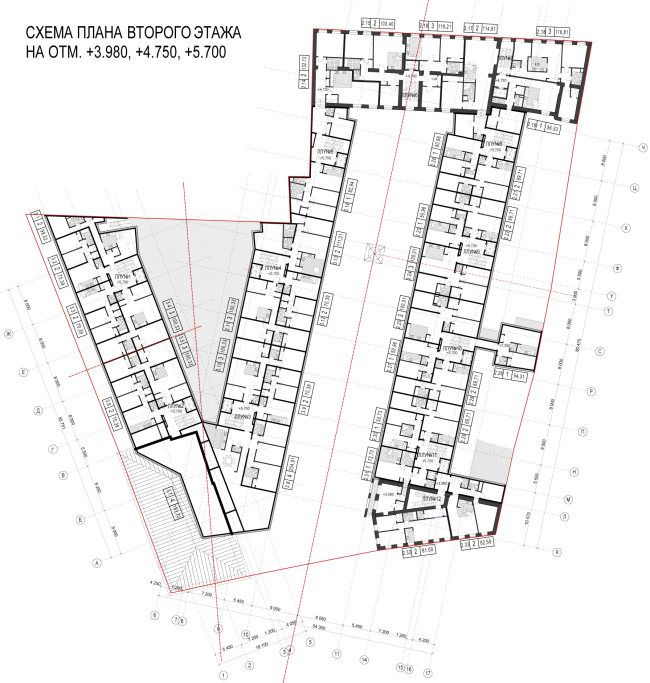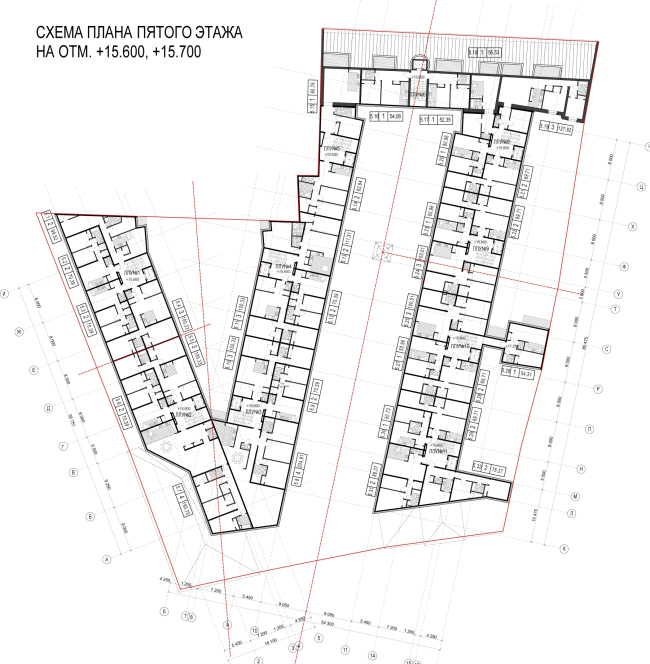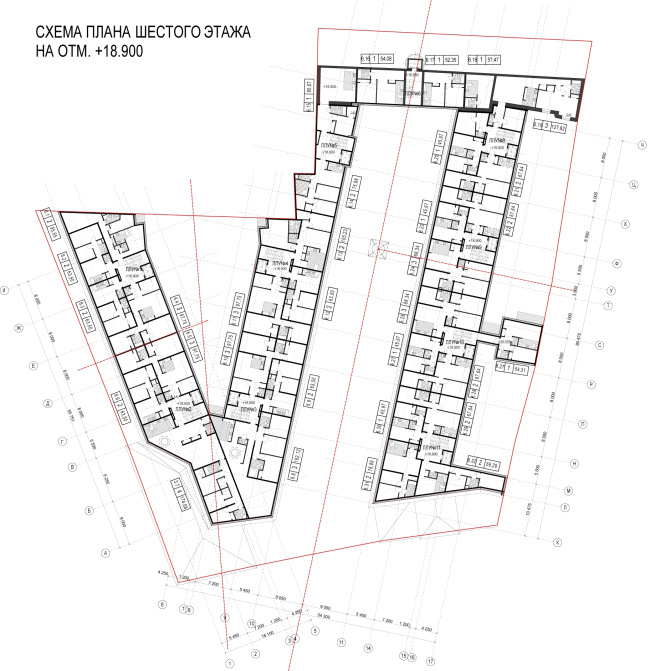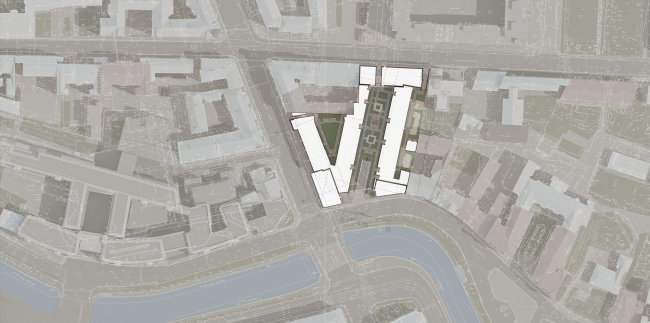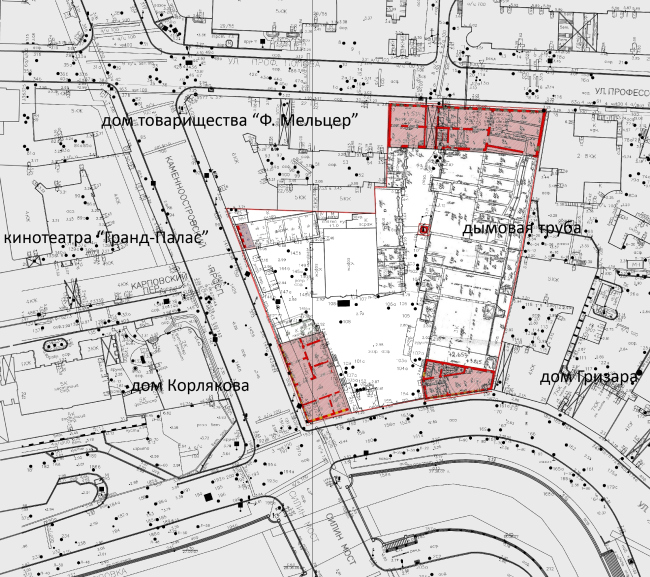
The object of design was the land site at the crossing
of the
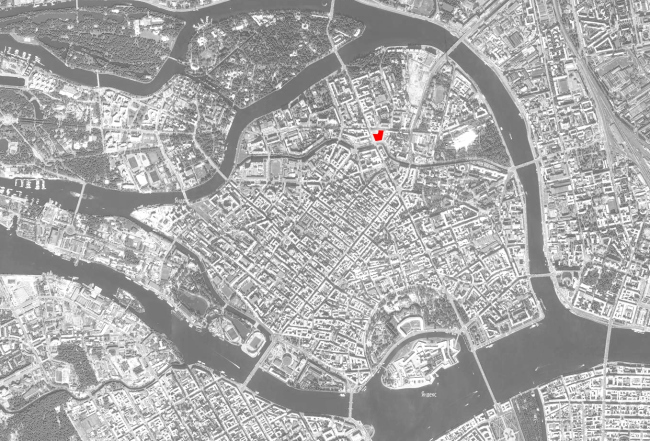
Uniting, into a single
composition, several volumes, so much different in scale and style, the
architects predictably treated the new complex as a large concise shape that
fills the gap in the city fabric and serves as the background for the
historical buildings. The facades of "Korlyakov House" and "
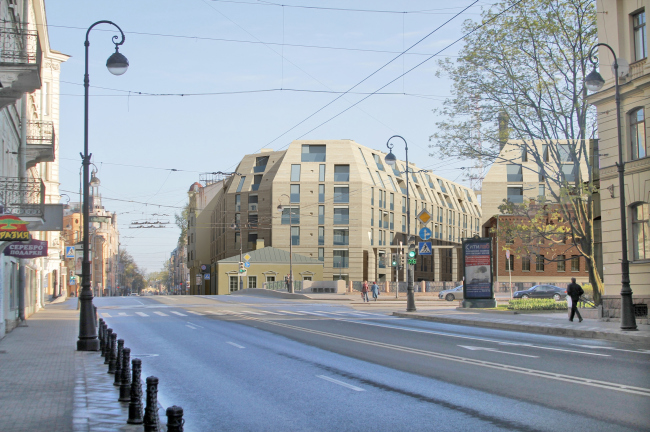
However, as far as the
factory buildings are concerned, their front facades also are restored, and the
construction together with all the structural elements, including the
load-bearing walls, the stairs and even the columns, are preserved, which makes
it possible to create inside large-dimension apartments a la loft. The restored
red-brick walls also look as if they grow out of the "body" of the
new volume; however, their merging does not look stilted because the
architectural solution of the new buildings is in fact the modern
interpretation of the industrial style. The laconic plastic of the facades,
coated by brick or natural stone, is diversified only by the differently
designed window apertures (in the form of French balconies and the niches, sunk
into the plane of the wall), and the inclined walls of two upper levels, into
which recessed balconies are cut. This trapeze-shaped silhouette, in spite of
its geometric generality, accurately matches the scale of the
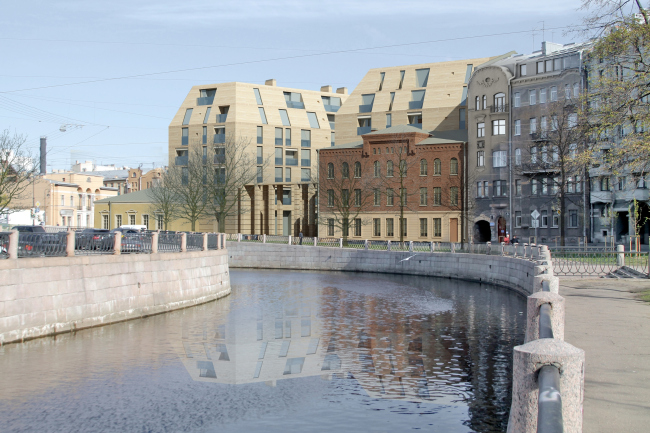
The sense of continuity is
enhanced by the overall compositional solution chosen by "Studio 44"
for the new residential complex. “It is specifically in area of the

A court of honor indeed provides
a whole lot of benefits: besides the dramatic and really statuary composition
that the house gets together with such kind of court, it allows for combining
dense housing with a great insolation and helps provide the maximum number of
apartments with great viewing properties. What is also important is the fact
that in the megalopolis conditions such a house gets an improved and landscaped
adjacent territory of its own - that, at the same time, actively interacts with
the city environment. “Probably, the only thing that makes the XXI century
court of honor different from its historical prototype is its communication
purpose - Nikita Yavein continues - While in the day past it was meant for the
access of the equipages to the front doors, now that the underground parking
lots are quite common, there is no necessity for that. The court becomes the
place of leisure and strolls of the tenants of house”.
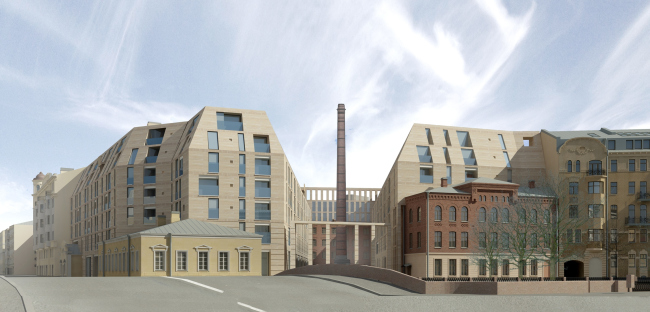
The overall size of the designed
court of honor - 18 x 80 meters with the height of the cornices of the
surrounding buildings at the level of 17.5 meters - also completely corresponds
to the historical prototypes, allowing the architects to create a comfortable
space with classic proportions. .Its semantic and aesthetic centerpiece is the
red-brick chimney - yet another element that the new residential complex has
inherited from the factory building and that is carefully restored by
"Studio 44", while from the embankment the court is separated by a
massive portico, also made of brick.

As for the second courtyard, it
is planned, as was already mentioned, to brace it on the level of the second
floor and make small front gardens next to the apartments of this level. Under
these private small gardens, there will be arranged the commercial areas, for
illuminating which the architects have devised a spectacular zenith lamp.
